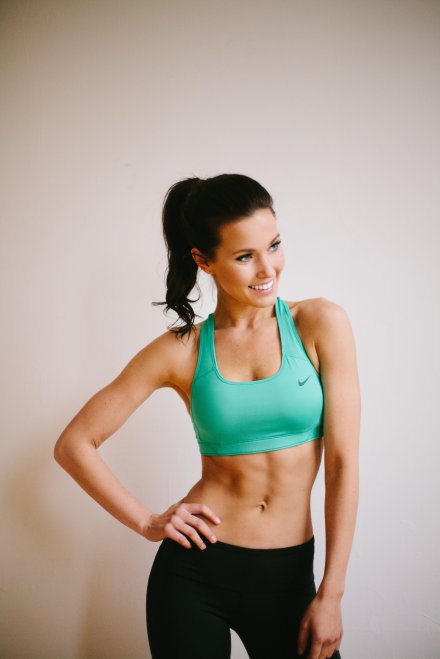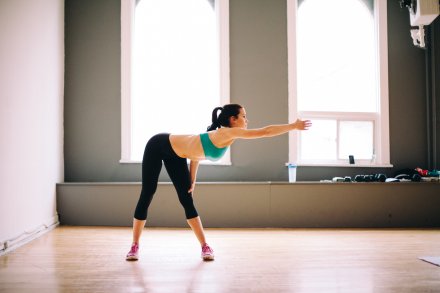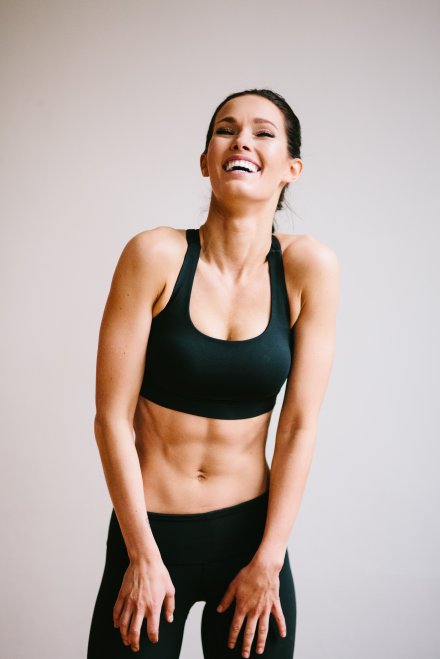I had the pleasure of sitting down with the bubbly girl-on-the-go, Johanna Seier. At 21, she’s already started her own personal training business, Aurea Fitness. We chatted over smoothies at Green Carrot about what inspired her to start her own business and her latest project– The Fit Girl Guide.
Johanna started Aurea Fitness after returning from a gap year trip to Australia.
“When I got back from Australia I had gained a lot of weight, I wasn’t feeling great about myself. It’s so silly that I spent time on this trip and there were times when I knew I wasn’t getting the most out of experiences because I was stressed about the way I felt about my body,” says Johanna.
She jokes about having an “a-ha” moment of realization, “I was on the plane and I was having a moment as I sat next to a mom and a screaming baby and I thought, ‘this is going to be different, I’m going to educate myself.”
And that’s exactly what she did. Like many other young females, Johanna had tried various fad diets. This time around, she decided to ditch the diet and focus on effective, healthy ways to get in shape.
Johanna has spent the last three years reading about different exercises and trying them out at home and at the gym. From there she started her business which offers personal one-on-one training, group training sessions, or group bootcamps.
“I want to help girls and women feel better about themselves and have balance in their lives, so that they can be proud and confident, but they’re not obsessed over things.”
Johanna believes that fitness, like most things in life, should be about balance. That’s why her workouts are designed to be intense, quick, and effective.
“I know during my bootcamps some people hate me in the moment, but they’re also fun. We blast some pretty hard rap music and work together as a community. Everyone supports eachother.”
Aurea Fitness has built a large community on social media. So when Johanna decided to start her current project, The Fit Girl Guide, she reached out to her followers on Instagram and Twitter to see if any females would be interested in trialling a ten-week fitness plan, completely free of charge.
“I didn’t know what the response would be and the messages were over-whelming, it was really exciting.”
She had originally wanted 4 girls to trial her fitness program and ended up having 6 because the response was so great.
Johanna has spent the last 8 months creating The Fit Girl Guide and all the exercises featured in the 10-week program she’s carefully curated from what has worked for her one-on-one and group fitness clients.
The Fit Girl Guide features dynamic exercises that are a combination of cardio, strength and plyometrics. All the workouts are around 30 minutes, so that they fit easily into your day.
“I believe in pushing yourself, I think that so many people want the results but don’t want to put in the effort. Unfortunately that’s not the way it works.”
The program is specifically designed for girls on-the-go. The workouts are short and intense. To do the program you’ll need very little equipment. And at around $50, The Fit Girl Guide packs a fitness punch at a great price point.
“I was broke from traveling but I wanted to get in shape. A lot of my friends were in the same predicament. We’re in our twenties, we don’t have a lot of money, or money to spend on a gym membership. We definitely don’t have money to see a personal trainer on a regular basis.”
Johanna notes that her personal training rates, bootcamps, and The Girl Guide are priced very competitively because she wants getting into shape to be accessible to a large demographic. She has meticulously designed The Fit Girl Guide so that even fitness newbies can easily complete the 10-week program. Each exercise has several photos to illustrate proper form. And minimal equipment is needed for the exercises– a mat, free weights, a weight bench, and a stability ball. All of these items are relatively inexpensive and Johanna says you can find them all at Canadian Tire.
The Fit Girl Guide also features smoothie recipes that are great on-the-go meals or post-workout snacks as well as a “healthy swap” section that has ways to health-ify certain foods.
“I’m not a nutritionist and I don’t claim to be… I don’t want to set up strict meal plans which can lead people to ‘cheating’ and I don’t really like that term… ‘what the hell are you cheating on?’”
She’s truly a girl after my own heart. I couldn’t agree more with Johanna’s health and fitness philosophy. There’s no cheating, there’s only eating. And there’s no cheating when you want to get in shape. You gotta put in the work!
I’m super excited to try our The Fit Girl Guide. The ebook will be available in late January through the Aurea Fitness website.




